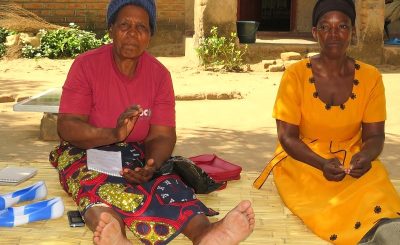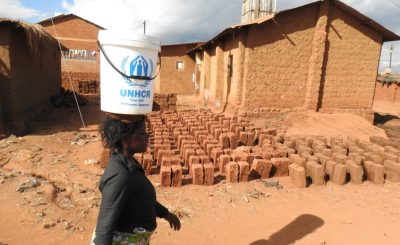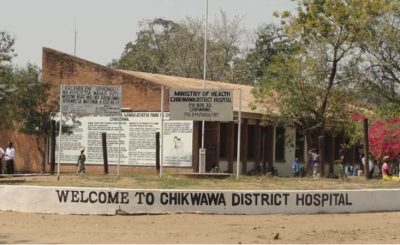The multimillion dollar upgrade of the Walvis Bay port opens new opportunities for regional trade
“It’s a different thing every day,” says Immanuel Hango, standing on the dock and beaming at a crane as it hauls containers from a line of trucks onto a waiting ship.
Since he was a child growing up in the North of Namibia, all Hango ever wanted was to be an engineer. In 2016 he was one of 100 Young African Leaders who travelled to the United States to meet then-President Barack Obama. Now he is one of the engineers working at Namport, Namibia’s port authority, building the future of his country.
Walvis Bay has its sights set on becoming the preferred gateway for some of the landlocked SADC countries. Driving this initiative is a massive investment in infrastructure in the region, including USD 300 million in upgrades to the corridors linking Walvis Bay to the rest of SADC and a USD 2.3 billion upgrade to the existing Walvis Bay port.
“The port master plan that looks at this new area (and) identified the need for the port to serve not just our small population in Namibia, but the whole of SADC,” says Elzevir Gelderbloem, the Executive Secretary of Namport.
“Since independence, Namibia has served as the logistics hub for SADC more and more each year, but the issue was always the space,” says Gelderbloem.
Namport expects that the upgraded Walvis Bay port can serve SADC for the next 50 years. The upgrade will double the amount of goods flowing to and from SADC through the port.
Phase 1 of the upgrade is a liquid bulk terminal with space for two tankers, which will ultimately connect to a 100-hectare tanker farm where goods will be stored before being shipped out across the SADC region.
Next, a liquid natural gas terminal will be constructed to feed a planned power station, followed by a dry bulk terminal to handle the import and export of goods from across the region. At the same time, Walvis Bay is expanding its container terminal.
Increasing trade throughout the region is a goal of both the SADC Protocol on Transport, Communications, and Meteorology and the SADC Regional Indicative Strategic Development Plan.
Improving the transport infrastructure across borders is also a key focus of the Regional Infrastructure Development Master Plan, which projects that SADC port traffic will increase from 92 million tons in 2009, to 500 million by 2027.
These volumes can only be achieved if Member States continue to make it easier to trade across regional borders.
“Regional integration is a tool, and it is a very important strategy for development,” says Dr Stergomena Lawrence Tax, the Executive Secretary of SADC.
“Through our free trade regime we have eliminated tariffs, so that within SADC you get a bigger market for your products, but you can also compete with products from outside of the region,” Dr Tax notes.
The SADC Free Trade Area, which took effect in 2008, is based on the SADC Protocol on Trade. The protocol aims to liberalise trade relations between Member States, stimulate the investment environment and spur economic growth.
Namport’s CEO is keenly aware of the Walvis Bay port’s regional dimension.
“Part of the business case for this port is connections to get products to and from SADC.The road corridors around the port are currently in excellent “The port master plan that looks at this new area, identified the need for the port to serve not just our small population in Namibia, but the whole of SADC.” says Elzevir Gelderbloem Executive Secretary of Namport.”There are plans to upgrade these corridors with rail connections. In that way we will serve the SADC region,” says Gelderbloem.
The port is located along four key development corridors. To the east it connects to the TransKalahari Corridor, which is the preferred route for time-sensitive goods going to Botswana and South Africa. To the North, the Trans-Cunene Corridor serves Southern Angola, and to the South, the Trans-Oranje Corridor services the mining and agricultural centres of South Africa. The Walvis Bay-NdolaLubumbashi Corridor to the Northeast crosses into Zambia, creating a critically important trade route for goods to and from the Zambian copperbelt and Lubumbashi, the second-largest city in the Democratic Republic of Congo.
“Lubumbashi is landlocked. We don’t have direct connections to the (Congolese) ports at Banana or Boma,” says Kabash Munung, the Business Development Manager for the Walvis Bay Corridor Group (WBCG) in Lubumbashi. “But we use Walvis Bay as our gateway to the ocean, where we can import mining materials and general cargo like supermarket products and frozen food.”
The development and maintenance of the corridor infrastructure connecting Walvis Bay to the rest of SADC is driven by the WBCG. Founded in 2000, the group’s mandate is to engage in business development by promoting the port of Walvis Bay as a viable trade route for goods to enter and exit SADC.
“Our stance has always been that, like the African proverb, you eat an elephant piece by piece,”says CEO Johny Smith. “We took time to assess and understand our neighbours. And only upon that did we develop relationships and agreements.”
In 2004 WBCG led an initiative to build a bridge at Katimo Mulilo, linking Namibia with Zambia as part of the Walvis BayNdola-Lubumbashi Corridor.
“It’s almost like developing a warehouse for SADC through Walvis Bay. If you look at Brazil and the rest of South America, it takes 20 days to get to the economic centres of the world, but it takes seven days for a ship to get to Walvis Bay from Brazil, and it’s only us who can do that.”
In Walvis Bay, the streets are alive with industry as the old road connecting Walvis Bay with nearby Swakopmund is undergoing a USD 75 million upgrade. The new dual carriageway will be primarily for the use of heavy transport servicing Walvis Bay and is expected to be finished in 2018.
For Namport engineer Hango, the future – for the port and for the region – is bright.
“This whole upgrade is built around the idea of being the gateway into SADC,” he says. “If you come back in a few years, it’s going to be the Singapore of Africa.”
SADC Protocol:
The Regional Infrastructure Development Master Plan (RIDMP) is the backbone of SADC’s infrastructure vision for the future. It aims to develop and maintain the transport infrastructure in the region and to harmonise policies around transport. Key to this is the ability of Member States to implement transport reforms and to ensure sustainable funding for the maintenance and provision of infrastructure. The RIDMP also seeks to stimulate economic development by fostering public private partnerships and promoting regional development corridors.





